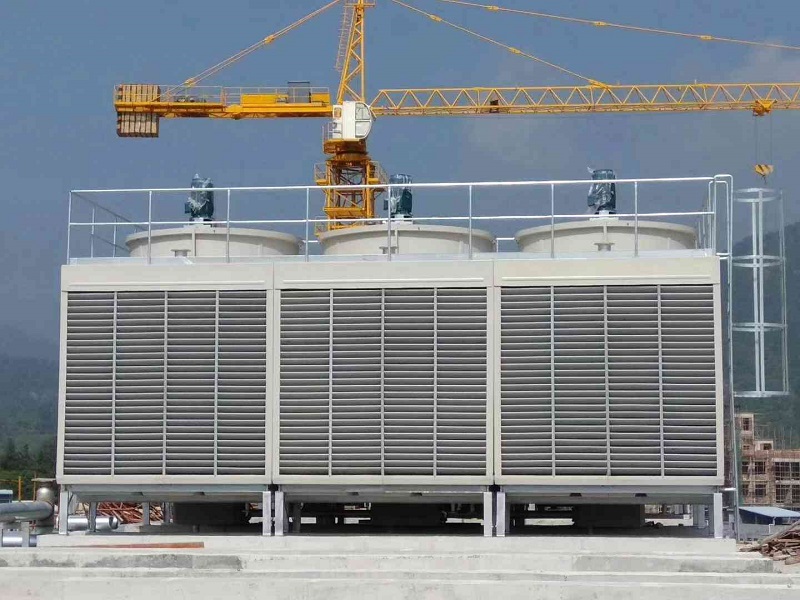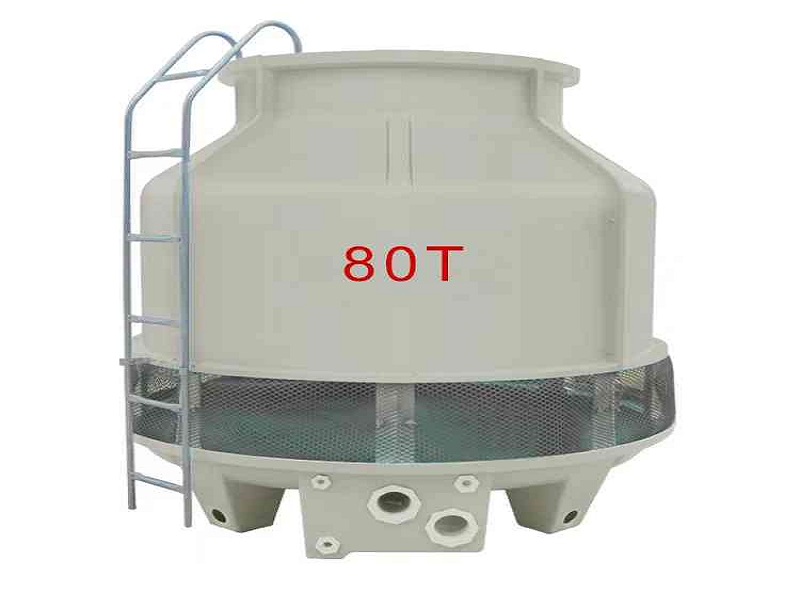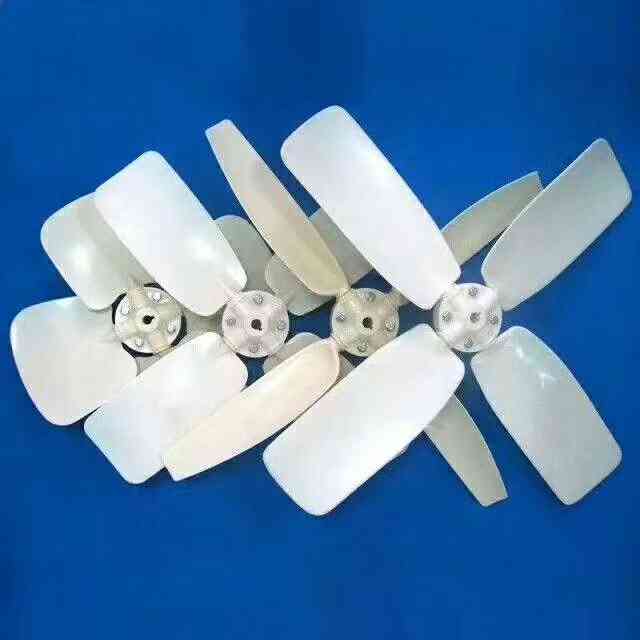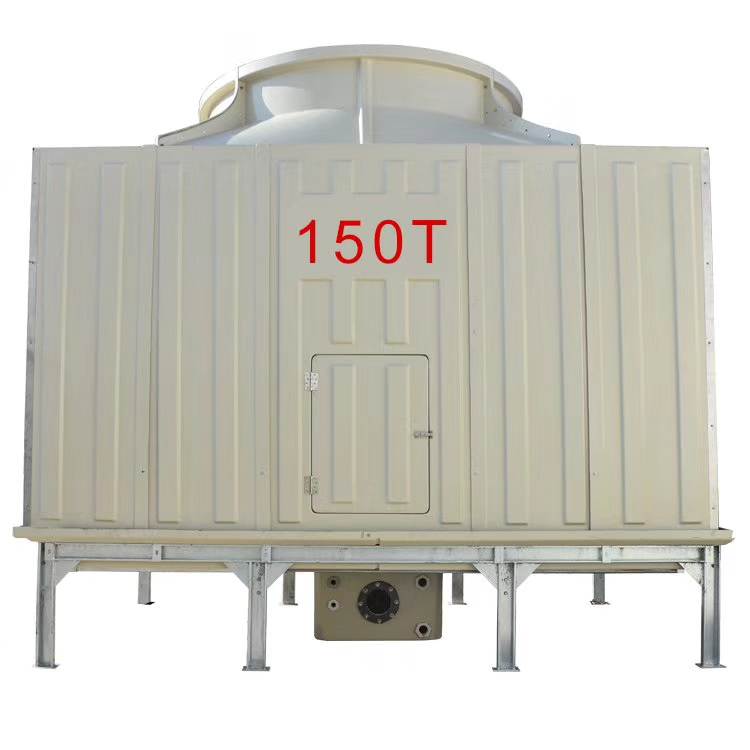- Manufacturer of fiberglass products, including fiberglass grating and fiberglass roof.
- sales@fiberglassgo.com
Our fiberglass cooling towers are built with high-strength FRP for exceptional durability, corrosion resistance, and efficient heat dissipation. Designed for stable performance in industrial and commercial applications, they offer reliable cooling, easy maintenance, and long service life
What is a Cooling Tower?
A fiberglass cooling tower is a device designed to cool and lower the temperature of water. Its basic principle is to pump the water that needs cooling up to the top of the
tower. From there, the water flows downward through the fiberglass cooling tower, coming into contact with air during its descent. This contact allows heat to dissipate, reducing the water’s temperature.

What is an FRP Cooling Tower?
A fiberglass cooling tower—also referred to as an FRP cooling tower—lowers water temperature by allowing water and air to interact, dissipating heat through evaporation, convection, and radiation. The outer shell is made primarily from fiberglass-reinforced plastic, a lightweight, corrosion-resistant material that provides fast cooling performance.

How Does a Cooling Tower Work?
Hot water is delivered through a pipe system to the top of the cooling tower. It is then evenly distributed over the fill material by spray nozzles or a water distribution system. The fill increases the contact surface area between water and air, forming thin films or droplets for better heat transfer.
At the same time, fans at the base of the tower draw air in from the sides or bottom. As the air moves upward, it exchanges heat and moisture with the downward-flowing water. A portion of the water evaporates, absorbing a large amount of latent heat, which rapidly lowers the water temperature. Additional cooling occurs through convection heat exchange between the water and the air.
The cooled water collects in the basin at the bottom of the tower and is pumped back into the process for reuse.
Main Components of a Fiberglass Cooling Tower
1. Outer Shell
Made from fiberglass-reinforced plastic (FRP), the shell offers excellent corrosion resistance and can withstand environmental factors such as wind pressure, its own weight, internal equipment, and water load. Common shapes include round and square designs.
2. Fill Media
One of the most important components, the fill is usually made from PVC, PP, or other advanced composite materials. Typical designs include honeycomb or corrugated structures, which help distribute water evenly, increase contact time with air, and improve cooling efficiency.
3. Cooling Tower Fan
Fans are generally either axial or centrifugal. Axial fans, commonly used in counterflow towers, provide large airflow with lower pressure, moving air vertically to maximize heat exchange. Centrifugal fans, with higher pressure output, are used in special designs requiring greater air-driving force.
4. Water Distribution System
This includes spray nozzles and distribution arms. Spray nozzles ensure even water coverage over the fill, while distribution arms (including rotating types) maintain uniform flow.

5. Cold Water Basin and Piping
Located at the bottom of the tower, the basin collects cooled water. The inlet and outlet piping deliver hot water to the top and return cooled water to the system. Pipes are often insulated to reduce heat loss.
Crossflow Cooling Towers
- Features: In a crossflow tower, water flows vertically downward through the fill, while air flows horizontally across it—at right angles. Typically square in shape, these towers are easy to maintain, with even water-air distribution for stable temperature control.
- Water Distribution: Uses fixed spray systems with long service life and low spray pressure.
- Drift Eliminators: Designed to reduce scaling and algae growth, and easy to clean.
- Applications: Stable, low-noise, and energy-efficient operation makes them suitable for residential, commercial, and hotel settings.
Counterflow Cooling Towers
- Features: Water flows downward while air flows upward, moving in opposite directions. These towers are usually round and occupy less space, but have a more complex internal structure. Rotating water distributors can sometimes become clogged.
- Water Distribution: Uses rotating spray arms that require high pump performance but are less prone to blockage.
- Applications: Ideal for high-temperature cooling needs in industrial and mining applications.
Selecting a Fiberglass Cooling Tower
1. Thermal Parameters
Standard designs assume inlet water at 37 °C and outlet water at 32 °C (ΔT = 5 °C). High-temperature models can handle inlet water up to 60 °C. If the actual temperature difference varies by ±15% or more, the fill efficiency should be recalculated.
2. Circulation Flow Rate
Follow the “design flow × 1.2” redundancy rule. For example, a 50-ton tower works well with 30–50 m³/h flow. Closed-loop systems must account for coil heat exchange area to prevent secondary heat loss.
3. Environmental Factors
Pay attention to wet bulb temperature (WBT). In cold climates below –10 °C, anti-freeze design is essential. In chemical zones, add corrosion allowance. Coastal areas benefit from epoxy vinyl ester resin construction.

Classification of Fiberglass Cooling Towers
- By ventilation: natural draft, mechanical draft, and hybrid draft.
- By contact type: wet, dry, and hybrid.
- By flow direction: counterflow, crossflow, and mixed flow.
- By application: air-conditioning, industrial, and high-temperature types.
- By noise level: standard, low-noise, ultra-low-noise, and super-silent.
- By shape: round fiberglass cooling towers and square fiberglass cooling towers.
Cooling Tower Materials
The main materials for cooling tower shells include metal, plastic, and fiberglass. Metal can corrode over time, while plastic lacks sufficient strength. Fiberglass combines the strength of metal with the corrosion resistance and light weight of plastic, making it the ideal material for cooling tower construction.
Fiberglass Cooling Tower Manufacturer
Henry Fiberglass specializes in manufacturing fiberglass cooling towers. With years of experience in R&D, production, and sales, we provide full technical support, project management, and on-site service under our guiding principle: “Create Value, Serve the World.”
In addition to cooling towers, we also produce fiberglass grating, fiberglass roof panels, and fiberglass pipe. Our product range covers cooling towers from 10 tons to 1,000 tons.
For inquiries, please contact: Email: sales@fiberglassgo.com — we look forward to serving you.
Qinbei Industrial Park, Qinyang City, Henan Province, China